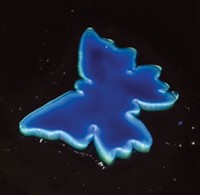Advertisement
Grab your lab coat. Let's get started
Welcome!
Welcome!
Create an account below to get 6 C&EN articles per month, receive newsletters and more - all free.
It seems this is your first time logging in online. Please enter the following information to continue.
As an ACS member you automatically get access to this site. All we need is few more details to create your reading experience.
Not you? Sign in with a different account.
Not you? Sign in with a different account.
ERROR 1
ERROR 1
ERROR 2
ERROR 2
ERROR 2
ERROR 2
ERROR 2
Password and Confirm password must match.
If you have an ACS member number, please enter it here so we can link this account to your membership. (optional)
ERROR 2
ACS values your privacy. By submitting your information, you are gaining access to C&EN and subscribing to our weekly newsletter. We use the information you provide to make your reading experience better, and we will never sell your data to third party members.
Materials
New Hydrogel Is Both Stiff And Tough
Materials: Mixing alginates of different lengths produces a resilient material with an unusual blend of properties
by Neil Savage
June 6, 2014

Hydrogels, soft materials consisting of polymer and water, could replace damaged cartilage in people or serve as artificial muscles and nerves for soft, deformable robots. But it’s difficult to make the materials both stiff and tough at the same time; stiffer hydrogels are brittle, while those less apt to break are too squishy. Now a team at Harvard University has used a substance derived from seaweed to make a hydrogel that is both stiff and tough (ACS Macro Lett. 2014, DOI: 10.1021/mz5002355).
Joost J. Vlassak, Zhigang Suo, and their colleagues created the hydrogel by mixing distilled water and acrylamide, along with two types of naturally occurring sodium alginate, which comes from the cell walls of brown algae. They added a combination of calcium sulfate and calcium chloride to act as ionic cross-linkers in the polymer network. The two alginates had different lengths, one up to nine times as long as the other. The short-chain alginates produce a low viscosity mixture, making it easier to pack high concentrations of the polymer into the hydrogel, which increases the material’s stiffness. The long-chain versions contribute to the gel’s toughness. They form long stretches of cross-links between the other polymers, which can bridge cracks in the network. Also, these ionic links can unzip to dissipate stress.
With the right proportions of components, the new material can have an elastic modulus, a measure of stiffness, of approximately 1 megapascal, and a fracture energy, a measure of toughness, of about 4,000 J/m2. Vlassak says the material is as stiff as cartilage, but is tougher than the tissue, which has a fracture energy of 1,000 J/m2.
The properties of the hydrogel might be tuned further by using different lengths of alginates, Vlassak says. The range of lengths of naturally occurring alginates is limited, but hitting them with gamma radiation can produce different chain lengths.




Join the conversation
Contact the reporter
Submit a Letter to the Editor for publication
Engage with us on Twitter